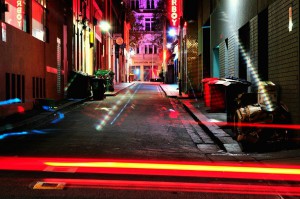There’s no shortage of hype over the potential of the Internet of Things (IoT), but the City of Melbourne is on the cusp of creating the Internet of Rubbish. Literally.
The CBD council for Australia’s southern capital this week announced that it will install street bins equipped with special solar powered sensors that detect when they are nearly full so that it can quickly dispatch trash collectors before rubbish starts piling up on the street.
It’s a novel solution to solve a persistent problem that councils with high population density face all over the globe – when is the best time to run a collection truck to keep litter off the streets?
According to City of Melbourne Lord Mayor Robert Doyle, while the CBD’s street bins collect some 4800 tonnes of waste every year, a major issue is keeping them “below capacity” (that means not overflowing) “during events and busier times of the year.”
“Overflowing bins are a terrible look for our city. Our street bins are emptied daily but if a bin is full by 8.30 in the morning, it’s impossible for us to know about it,” Lord Mayor Doyle said.
“These sensors will send an alert back to base when a bin hits 70 per cent capacity so it can be emptied within the hour. We’ll be installing 50 of these sensors in existing street bins in September for a two-year trial.”
Technical details of how the sensors transmit their capacity status back to rubbish central remain a little scant, but what is certain is that each bin will need an identifier to pinpoint its location.
Emptying bins might not be considered a glamourous or skilled occupation, but when the rubbish system fails there’s hell to pay at City Hall as businesses, the public and the media pile on the criticism.
It’s one reason councils have become increasingly obsessed with metrics surrounding waste management that range from putting a dollar value on a ‘bin lift’ to tracking where the rubbish inside it came from.
Apart from adding traffic to priority lanes in already congested cities, actually rolling a truck cots councils big dollars.
The City of Melbourne says it spends close to $10 million a year on waste services each year.
With the two-year trial of the 50 sensors running at a cost of $35,000, there’s little doubt management will want to see a decent return on investment for what amounts to a $700 per bin high-tech fitout.
“We’ve done an analysis of overflowing bins across the city, so we’ll be placing them in all the appropriate spots. The sensors will also help us keep an eye on bins in hard to reach areas where it’s not as easy to track the amount of rubbish going into them,” Lord Mayor Doyle said.
There are also more mechanical ways to economise on waste collection, namely squashing down rubbish on the spot as it’s deposited to cram more in.
Melbourne is also deploying state of the art “Big Belly Bins” that cost $35,000 a piece and can compact their contents to maximise capacity, a major gain in high traffic areas.Lord Mayor Doyle said that by the end of the year seven of the trash eating monsters will be deployed into key locations like the iconic corner of Swanston and Flinders streets.
The chair of the City of Melbourne’s Environment Portfolio, Councillor Arron Wood reckons the deployment of sensory rubbish technology is an Australian first. Trash is also part of the the price a city pays for attracting more people and tourists.
“One of the knock-on effects of a growing population and more visitors to our city is an increase in waste on our city streets and in our laneways, which is a really bad look for the amenity of our city,” Councillor Wood said.
“We’re constantly looking for innovative ways to better manage waste, and this is one example where we’re ahead of the game.”
In Sydney trashy politics goes hand in hand with trashy journalism, as its Lord Mayor Clover Moore discovered last year.
The city’s hard campaigning tabloid newspaper, the Daily Telegraph, went as far as Photoshopping rodent features onto Lord Mayor after its intrepid journalists discovered rats frequenting rubbish in the lanes of red light district Kings Cross.






This is genius! I love that you are all thinking to help the earth by putting solar panels on top of your “robot” garbage bins. It also will keep the community clean. Hooray! If we all were to think on this level we could have an world-friendly waste system. I’ll pass the concept along, Thank you.
They should start using those new solar bins that take up to 5 times more rubbish than regular bins. A lot of companies are using them already